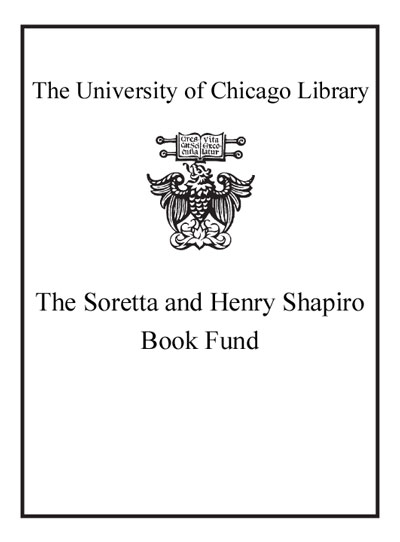|
|
|
|
| LEADER |
00000pam a2200000 i 4500 |
| 001 |
10542270 |
| 003 |
ICU |
| 005 |
20160421080843.6 |
| 008 |
150706s2016 enk b 001 0 eng |
| 010 |
|
|
|a 2015019143
|
| 020 |
|
|
|a 9781107015029
|q hardback
|
| 020 |
|
|
|a 1107015022
|q hardback
|
| 035 |
|
|
|a (OCoLC)913647132
|
| 040 |
|
|
|a DLC
|b eng
|e rda
|c DLC
|d BTCTA
|d YDXCP
|d OCLCF
|d ERASA
|d CDX
|d EYM
|d NhCcYBP
|
| 042 |
|
|
|a pcc
|
| 050 |
0 |
0 |
|a P204
|b .G66 2016
|
| 082 |
0 |
0 |
|a 415.01
|2 23
|
| 084 |
|
|
|a LAN000000
|2 bisacsh
|
| 100 |
1 |
|
|a Good, Jeff,
|e author.
|0 http://id.loc.gov/authorities/names/n2007061210
|1 http://viaf.org/viaf/22469675
|
| 245 |
1 |
4 |
|a The linguistic typology of templates /
|c Jeff Good.
|
| 264 |
|
1 |
|a Cambridge, United Kingdom :
|b Cambridge University Press,
|c 2016.
|
| 300 |
|
|
|a xvi, 322 pages ;
|c 24 cm
|
| 336 |
|
|
|a text
|2 rdacontent
|0 http://id.loc.gov/vocabulary/contentTypes/txt
|
| 337 |
|
|
|a unmediated
|2 rdamedia
|0 http://id.loc.gov/vocabulary/mediaTypes/n
|
| 338 |
|
|
|a volume
|2 rdacarrier
|0 http://id.loc.gov/vocabulary/carriers/nc
|
| 504 |
|
|
|a Includes bibliographical references and index.
|
| 505 |
0 |
|
|a 1. Defining template -- 2. A typological description language for templates -- 3. Typologizing templates: case studies -- 4. Typologizing templates: comparison -- 5. Moving forward.
|
| 520 |
|
|
|a "This book represents the first comprehensive examination of templatic constructions - namely, linguistic structures involving unexpected linear stipulation - in both morphology and syntax from a typological perspective. It provides a state-of-the-art overview of the previous literature, develops a new typology for categorizing templatic constructions across grammatical domains, and examines their cross-linguistic variation by employing cutting-edge computational methods. It will be of interest to descriptive linguists seeking to gain a better sense of the diversity of the world's templatic constructions, theoretical linguists developing restrictive models of possible templates, and typologists interested in the attested range of patterns of linear stipulation and the application of new kinds of multivariate methods to cross-linguistic data. The new typological framework is illustrated in detail via a number of case studies involving languages of Africa, Europe, Asia, and the Americas, and numerous other templatic constructions are also considered over the course of the book"--
|c Provided by publisher.
|
| 520 |
|
|
|a "Defining template 1.1 Templates: Often invoked, but undertheorized The notion of a template has been used in a number of linguistic domains to refer to grammatical patterns where the form of some linguistic constituent appears to be well conceptualized as consisting of a fixed linear structure, whether in terms of the arrangement of its subconstituents or its overall length.1 To take two examples, consider Table 1.1, which schematizes the ordering of morphemes in verbs across the Athabaskan family, and Table 1.2, which gives data illustrating the application of a particular nickname formation strategy in Japanese where the resulting nicknames must be bimoraic in length. The pan-Athabaskan template described in Table 1.1 characterizes verbs in this family as consisting of a series of "slots" into which morphemes of different grammatically-defined classes appear"--
|c Provided by publisher.
|
| 650 |
|
0 |
|a Linguistic change.
|0 http://id.loc.gov/authorities/subjects/sh85077214
|
| 650 |
|
0 |
|a Typology (Linguistics)
|0 http://id.loc.gov/authorities/subjects/sh85139174
|
| 650 |
|
0 |
|a Linguistic analysis (Linguistics)
|0 http://id.loc.gov/authorities/subjects/sh85077213
|
| 650 |
|
7 |
|a LANGUAGE ARTS & DISCIPLINES / General.
|2 bisacsh
|
| 650 |
|
7 |
|a Linguistic analysis (Linguistics)
|2 fast
|0 (OCoLC)fst00999166
|
| 650 |
|
7 |
|a Linguistic change.
|2 fast
|0 (OCoLC)fst00999167
|
| 650 |
|
7 |
|a Typology (Linguistics)
|2 fast
|0 (OCoLC)fst01160078
|
| 903 |
|
|
|a HeVa
|
| 929 |
|
|
|a cat
|
| 999 |
f |
f |
|i 3c60f061-5b3e-5f29-9018-49f6faa2f75c
|s e3a50c92-2a03-55f5-a9f7-7b18b3af7006
|
| 928 |
|
|
|t Library of Congress classification
|a P204.G66 2016
|l JRL
|c JRL-Gen
|i 8723966
|
| 927 |
|
|
|t Library of Congress classification
|a P204.G66 2016
|l JRL
|c JRL-Gen
|e SHAP
|b 112635210
|i 9582350
|

